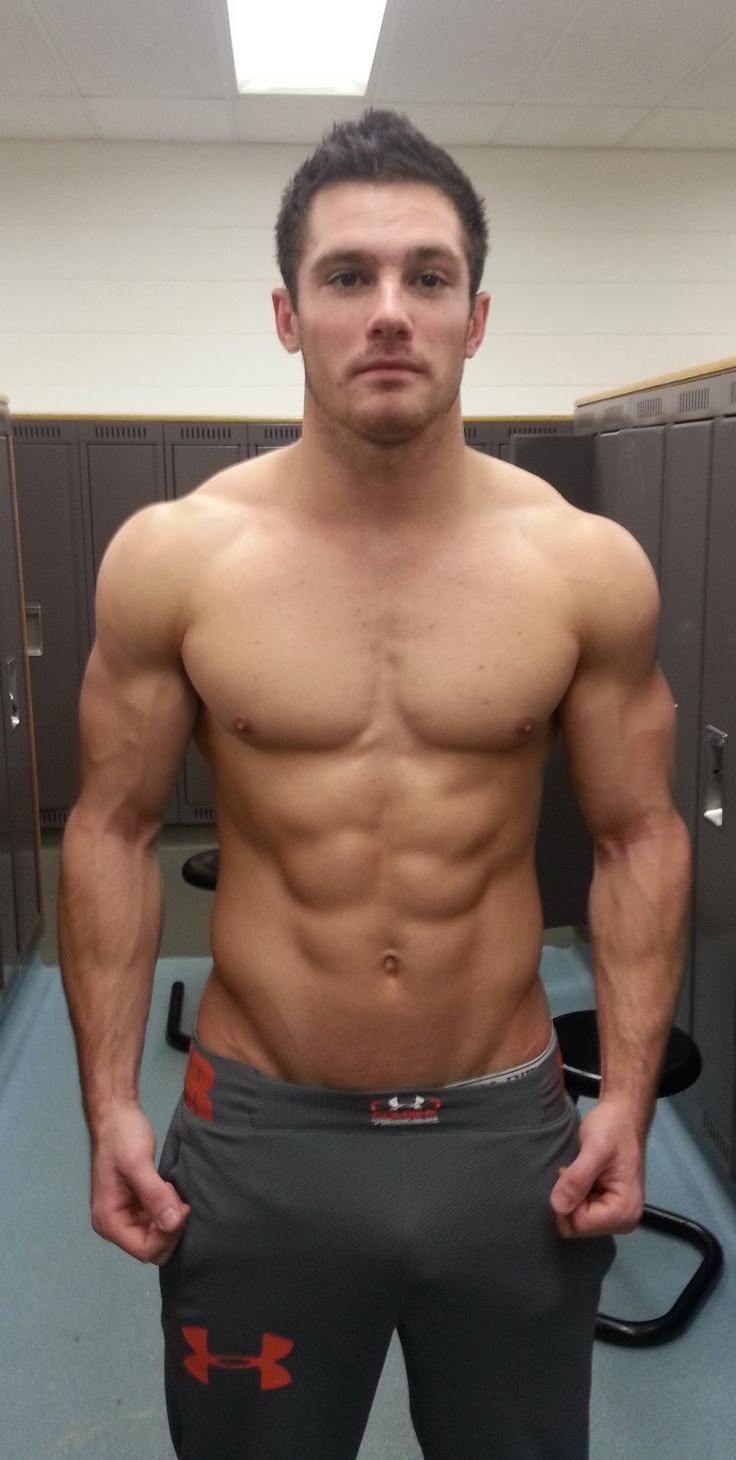The truth about abs. And a hot guy in under armour. What could go wrong?

The external obliques (obliquus externus abdominis), muscles at each side of the torso attached to the lower eight ribs and inserting at the side of the pelvis
BASIC FUNCTION: to flex and rotate the spinal column
The abs are, in fact, the visual center of the body. If you superimpose an X on the body with the terminal points being the shoulders and the feet, the two lines cross at the abdominals, and this is where the eyes are inevitably drawn. Men carry a disproportionate number of fat cells in the abdominal area compared to women (who can often be relatively fat and still have abs showing), so well-defined abs are one sign of being in top condition-lean, hard, and strong.
The traditional V-shaped torso is as important as a sheer mass when it comes to creating a quality, championship physique. I have often seen contests in which good bodybuilders came in a few pounds overweight in order to appear bigger but found the extra weight they were carrying at the waist spoiled the visual effect. When I got into bodybuilding, there were a few bodybuilders who made up for lack of overall size by the outstanding development of their abs-competitors like Pierre Vandensteen and Vince Gironda, for example. But in modern bodybuilding, every would-be champion, no matter his body type, has to have well-developed abs in order to be competitive, from the really massive bodybuilders (Dorian Yates, Nasser El Sonbaty, Yaul Dillett). Lack of abdominal development, or failure to display the abs properly, can be very costly in competition. Squats call for a lot of involvement on the part of the abdominals and the obliques as stabilizers. Spot reduction refers to training a specific muscle in order to burn off fat in that particular area. According to this idea, to develop abdominal definition, you do a lot of ab training, lots of high reps, and burn away the fat that is obscuring the development of the abdominal muscles. Unfortunately, this doesn’t work. When the body is in a caloric deficit and begins metabolizing fat for energy, it doesn’t go to an area where the muscles are doing a lot of work in order to get additional energy resources.
The body has a genetically programmed pattern by which it determines from what adipose cells to access stored fat energy. Exercise does burn calories, of course, but the abdominals are such relatively small muscles that no matter how much ab training you do you won’t metabolize nearly the energy you would by simply going for a walk for the same amount of time.
But this is not to say that training a given area like the abs doesn’t increase definition. As I said, the abdominals get a hard workout when you do heavy exercises, but what they don’t get is quality training-that is isolation, full-range-of-movement exercises. Movements that do this bring out the full shape and separation of the abdominals instead of just making them bigger. So although training the abs like this doesn’t do a lot to reduce the fat around the waistline, it does create very well defined muscles that are revealed once you are able to reduce your body fat sufficiently by means of diet and aerobic exercise.